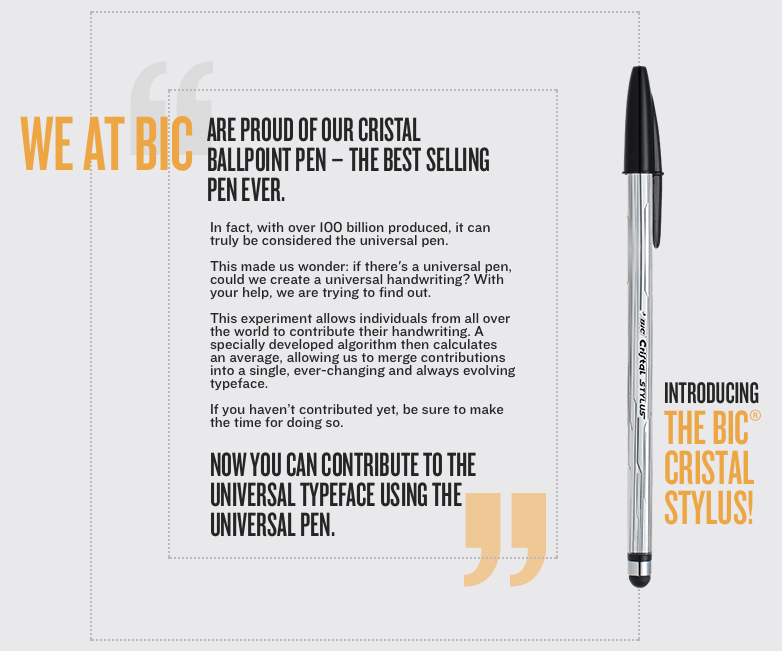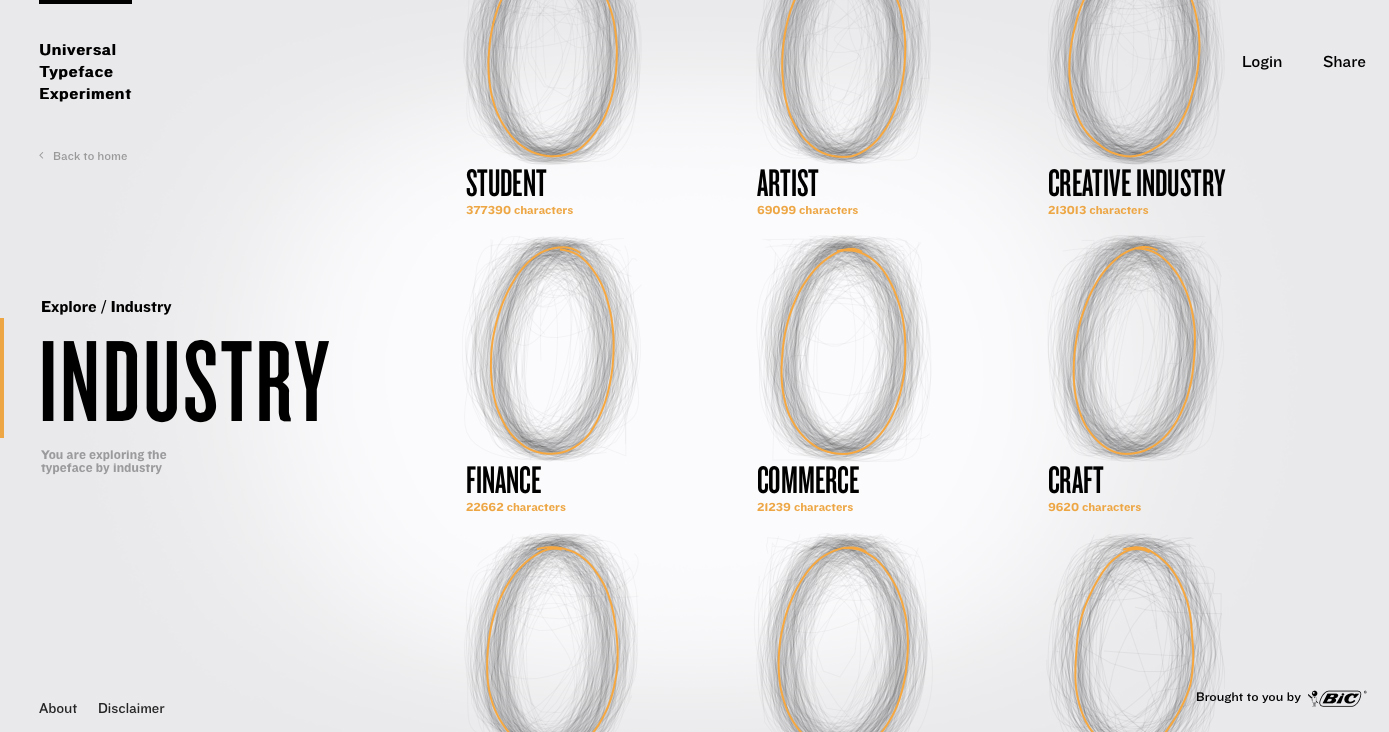The Universal Typeface Experiment
We all know the BIC pen—it’s the classic, no-fuss ballpoint pen most of us have grown up using, on everything from school essays to forms at the doctor’s office. (Did you know it is even part of the permanent collection at the Museum of Modern Art?)
Well, this tried-and-true brand is branching out, and calling attention to its new digital stylus with a fun (and clever) project called “The Universal Typeface Experiment.” According to this Smithsonian article, “The Universal Typeface is a constantly evolving, algorithmically produced font created by averaging hundreds of thousands of handwriting samples submitted to BIC’s website.” And anyone with a touchscreen device can contribute.
Is one’s handwriting as unique as his or her fingerprint? Not really; as can be expected, averaging hundreds of thousands of characters yields a pretty plain typeface. But comparing different countries, genders, and professions reveals some more dramatic differences. (I notice they didn’t include medical industry samples; perhaps the inputs were too difficult for the algorithm to interpret? I kid, I kid.)
This project is well-timed: the number of handwritten- and script-styled typefaces has skyrocketed in the past few years, and numerous programs help users capture their own handwriting and convert it to a font. Stylus technology has made great strides since that little Palm Pilot accessory (remember those?), and recent design has embraced an imperfect, humanistic touch. I recently wrote about handwriting and its impact on mental processing, and here I am writing about handwriting again. I just love this modern mash-up of handmade and digital creativity—it’s impacting the design world in beautiful ways, changing our brains, and it really seems to more authentically reflect our culture and society.
It’s like the Smithsonian article’s author wonders out loud, whether perhaps “we’ll find some greater truth about humanity or discover a platonic ideal alphabet or realize that we’re not so different from one another after all. World peace through typography.” Maybe. For now, it’s a fun experiment.


